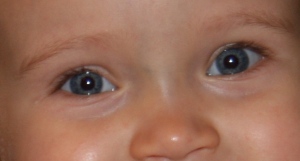NOTEWORTHY WEDNESDAY THURSDAY!
This past Sunday was the 10th anniversary of 9/11.
The horror of 9/11 will remain.
This year the surviving families, children and spouses showed us all how life goes on and how they have managed to remember and honor their loved ones who perished on 9/11.
The surviving children that honored their parents at the memorial were inspirational…some knew their parent others did not as they had not even born yet.
Children are remarkable and in their own way resilient.
Resilience is a word that is used often, but in my opinion it is a characteristic that is not well understood.
Each of us has the capacity for resilient behavior but it has to be nurtured in us.
Resiliency is the ability to spring back from and successfully adapt to adversity. An increasing body of research from the fields of psychology, psychiatry, and sociology is showing that most people–including young people–can bounce back from risks, stress, crises, and trauma and experience life success.
via Resiliency In Action.
It seems that some children function well after traumatic events and this is related to the way their parents’ have reacted to such events and the way they have been brought up to use adaptive coping responses.
It has been found:
When families and mothers ‘did well,’ so did their children. Conversely, families and mothers who showed negative posttraumatic reactions had children who showed similar negative outcomes.
An array of protective characteristics or factors has been identified in resilient children. They are present at the individual, family, and community level and contribute, together, to adaptation following trauma during childhood:
(1) trauma characteristics;
(2) the child’s own resources;
(3) the child’s family characteristics;
(4) the community support (i.e. from teachers, peers, friends, mentors); and
(5) developmental path.
via Children’s Resilience in the Face of Trauma | Education.com.
So the remarkable children and spouses, we witnessed on the anniversary of 9/11 speaking of their lives now, are reflections of their surviving parents and those who perished in the attacks that day in 2001.
Let us all try to foster resilience in our children in this age of uncertainty so that they can call upon it when and if they need to do so.
References
1. Masten, AS (1994) Resilience in individual development: Successful adaptation despite risk and adversity. In MC Wang & EW Gordon (Eds.) Inner City Educational Resilience
2. Masten, AS, Best, KM & Garmezy,N. (1991) Resilience and development: contributions from the study of children who overcome adversity. Development and Psychopathology, 2, 425-444
3. Scheering, MS & Zeanah, CH (2001) A relational perspective on PTSD in early childhood. Journal of Traumatic Stress, 14 (4) 799-815
4. Hoven, CW, Duarte, CS, Lucas, CP et al (2002) Effects of the World Trade Center attack on NYC Public School Students: Initial Report of the New York City Board of Education. New York: Columbia University Mailman School of Public Health, New York State Psychiatric Institute and Applied Research and Consulting, LLC
5. Ibid, p. 24
6. Terr, LC, Block, DA, Beat, MA et al (1997) Children’s thinking in the wake of Challenger. The American Journal of
Psychiatry, 154 (6)744-751
via Children’s Resilience in the Face of Trauma | Education.com.





